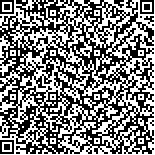| 摘要: |
| [目的]探索建立与国土空间规划体系相适应的国土空间开发适宜性评价理论基础与技术规程。[方法]引入生态位适宜度模型评估土地利用多功能适宜度,运用三维魔方分类方法划定土地利用多功能分区。[结果]洱海流域土地利用多功能适宜性水平差异显著,适宜生态服务、农业生产和城镇发展的土地面积分别占流域国土面积的9338%、7017%和6931%,其中适宜城镇发展用地环洱海集聚分布、适宜农业生产用地在流域中北部连片分布、适宜生态服务用地围绕流域环状分布; 将洱海流域国土空间划分为城镇空间、农业空间和生态空间,三大空间占比分别为769%、2433%和6799%; 城镇、农业和生态空间功能分区与现状土地利用结构吻合度高达7196%,其中城镇空间、农业空间和生态空间吻合度分别为6384%、5943%和9262%。[结论]土地利用多功能适宜性综合评价体系及其土地利用功能分区符合国土空间规划体系建设要求,符合洱海流域实际,能够为国土空间开发适宜性评价提供理论借鉴、为洱海流域国土空间优化提供技术支持。 |
| 关键词: 空间规划土地利用多功能适宜性生态位适宜度三维魔方分类洱海流域 |
| DOI: |
| 分类号:F3012 |
| 基金项目:国家自然科学基金项目“江汉平原乡村生活空间变化:规律机制及效应”(41671179) |
|
| MULTIFUNCTIONAL SUITABILITY OF LAND USE OF ERHAI LAKE BASIN UNDER THE VISUALIZATION OF SPATIAL PLANNING |
|
Wang Mingjie1,2, Yu Bin2※, He Yongjiao3, Zhuo Rongrong2, Hu Shuling2
|
|
1. School of Public Administration, Shandong Agricultural University, Tai′an, Shandong 271018, China; 2. Key Laboratory for Geographical Process Analysis & Simulation of Hubei Province, Central China Normal University, Wuhan, Hubei 430079, China;3. Xianning Urban & Rural Planning Bureau, Xianning, Hubei 437100, China
|
| Abstract: |
| The purpose of this research is to explore appropriate theoretical bases and technical regulations for the suitability assessment of territory development. Taking Erhai lake basin as a study case, this research tentatively constructed a comprehensive assessment system for the suitability of multi functional land use, including urban development land, agricultural land, and ecological land. And the niche fitness model was introduced for the evaluation of multi functional suitability of land use, and then the three dimensional Rubik′s Cube was adopted to land use zoning. The results showed that:(1)There was an obvious difference between the levels of multi functional suitability of land use of Erhai lake basin. By applying the niche fitness model, it showed that the ratios of the area of ecological service, agricultural production, and urban development to the global area were 93.38%, 70.17%, and 69.31%, respectively. In terms of spatial distribution, the urban development area clustered around Erhai lake, and the area that suited for agricultural production was continuously distributed in Northcentral region of Erhai lake basin, the area surrounded Erhai lake also suited for ecological service. (2)The land space of Erhai lake basin had been divided into three types, namely urban space, rural space, and ecological space, which featured the spatial structure a significant ring shape. The precedence principle for multi function partition of the basin started from ecological zones area, followed by agricultural production area and then urban development area. The result of partition conducted by the three dimensional Rubik′s Cube indicated that the ratio of each land use area to the global area was 7.69%, 24.33% and 67.99%, respectively. (3)The degree of similarity between urban, rural, and ecological functional zones with contemporary land use structure was as high as 71.96%. Specifically, the degree of similarity between each functional zone with contemporary land use was 63.84%, 59.43% and 92.62%, respectively. In conclusion, these results are basically consistent with the actual situation of Erhai lake basin, they can make a theoretical base to the land use suitability evaluation for spatial development and practical reference to technical support for the spatial optimization of Erhai lake basin. |
| Key words: spatial planning multi functional suitability of land use niche fitness the three dimensional Rubik′s Cube Erhai lake basin |

